Available Tests
Self-Doctor uses Chinese clinical trial standards as clinical tests were conducted in China. Therefore, the graphs are based on Chinese standards.
The comparison test reagent is the reference reagent used during clinical tests.
All 22 tests have received CFDA (China Food and Drug Administration) approval.
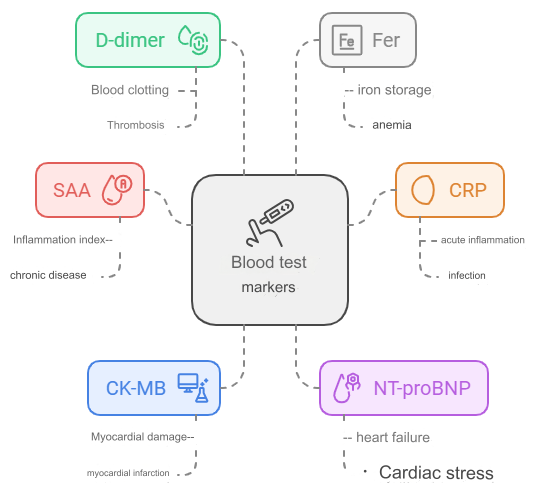
CRP, or C-Reactive Protein, is a type of protein that increases when there is inflammation or tissue damage in the body. This test does not specify which organ is affected but is essential for monitoring the course of inflammation.
Japanese standard: Less than 5mg/L (5μg/mL)
Chinese standard (Comparison test reagent: Beijing Joincare Bio-technology Co., Ltd.)
Less than 10μg/mL
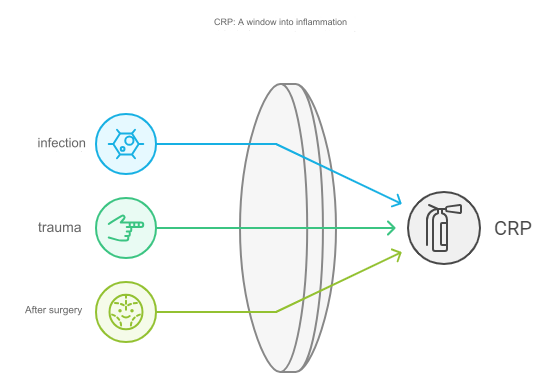
Ferritin is used to estimate the amount of stored iron and helps diagnose iron deficiency or excess.
Iron deficiency: Below 20ng/ml
Standard range: 20–500ng/ml
Iron overload: Over 500ng/ml
Chinese standard (Comparison test reagent: Roche)
Men: 30–400ng/mL
Women: 20–150ng/mL
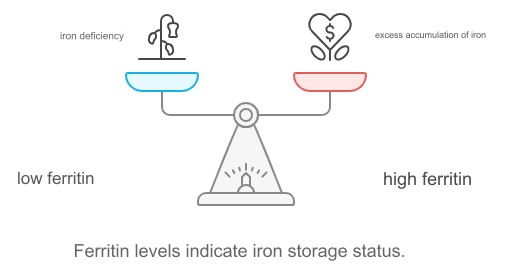
D-Dimer is a substance produced when a blood clot dissolves, which generally should not be detectable in healthy individuals. Elevated D-Dimer levels indicate the presence of blood clots.
Japanese standard: Less than 1.0μg/mL
Chinese standard (Comparison test reagent: Roche)
Less than 0.5μg/mL
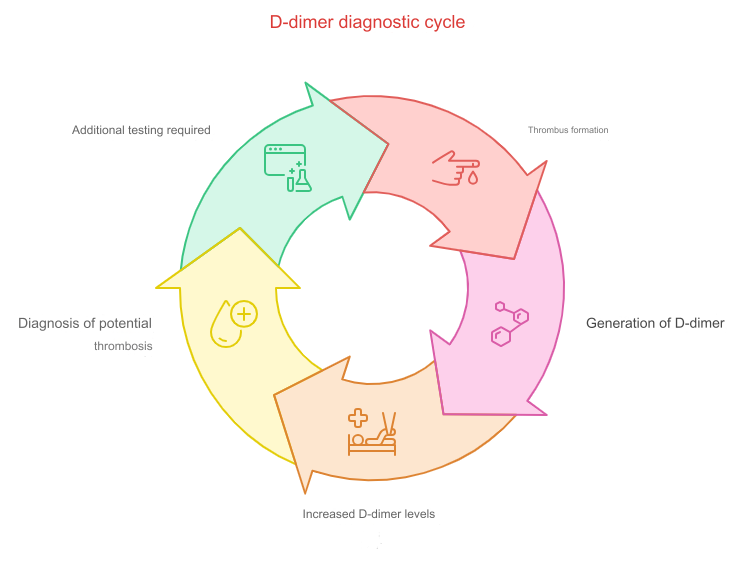
CK-MB is a marker of myocardial damage and is used to assess the extent of heart muscle injury, such as in myocardial infarction. It is a protein present at high levels in the myocardium, and only appears in the blood when heart muscle damage occurs, aiding in myocardial infarction diagnosis.
Japanese standard: 5ng/ml or less
Chinese standard
Women: 3ng/ml or less
Men: 5ng/ml or less

NT-proBNP (N-terminal pro-brain natriuretic peptide) is used for diagnosing and assessing the severity of heart failure, with a blood level of 400 pg/mL or more considered a diagnostic criterion for heart failure.
Japanese standard: 125 pg/mL or less
Chinese standard: 125 pg/mL or less

SAA is a type of protein in the blood that reflects the severity of inflammation. Its levels increase in cases of infections, malignant tumors, autoimmune diseases, and other inflammatory conditions.
Japanese standard: Less than 3μg/mL
Chinese standard (Comparison test reagent: Beijing Joincare Bio-technology Co., Ltd.)
Less than 10μg/mL

Adiponectin is a hormone secreted by fat cells that helps maintain blood vessels. Its secretion decreases as visceral fat increases, raising the risk of lifestyle diseases such as arteriosclerosis and diabetes.
High blood adiponectin levels are often found in centenarians, leading to its reputation as a “longevity hormone.”
Japanese standard: 4μg/ml or higher
Chinese standard (Comparison test reagent: Shenzhen YHLO Biotech Co., Ltd.)
1.2–15.6μg/mL
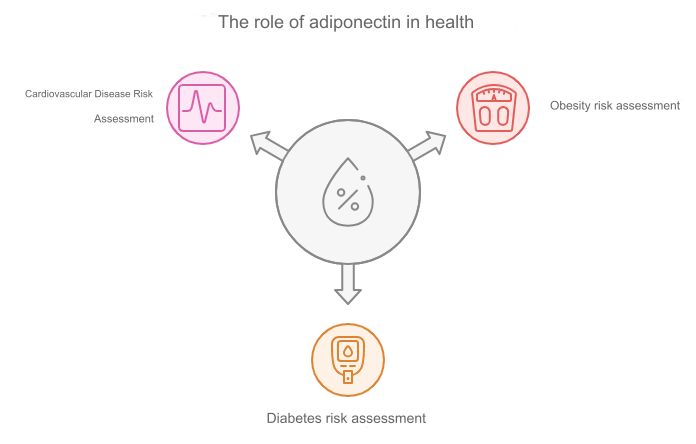
Albuminuria, tested in urine, serves as a kidney SOS indicator. Kidneys filter unnecessary substances while retaining essential ones; finding essential substances in urine indicates possible kidney abnormalities.
Common causes that strain the kidneys include:
- Diabetes
- High blood pressure
- Obesity
- Smoking
- Immune disorders
- Genetic diseases
Japanese standard: Less than 30mg/L
Caution: 30–300mg/L
Danger: Over 300mg/L
Chinese standard (Comparison test reagent: Beijing Leadman Biochemistry Co., Ltd.)
Less than 20μg/mL (20 mg/L)
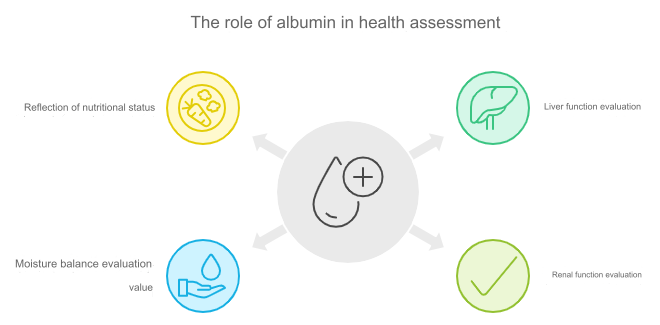
This test assesses whether vitamin D levels are sufficient or deficient.
Japanese standard: 30–100ng/ml
Deficiency: 20–30ng/ml
Severe deficiency: Less than 20ng/ml
Chinese standard (Comparison test reagent: Roche)
Summer: 11.5–54.8ng/mL
Winter: 9.7–43.2ng/mL

For Women
AMH, or Anti-Müllerian Hormone, is a hormone secreted from early-stage ovarian follicles, providing insights into the ovary’s potential to release eggs (“ovarian reserve” or “ovarian age”).
Japanese standard
Ages 20–24: 2.00–12.5ng/mL
Ages 25–29: 1.95–10.7ng/mL
Ages 30–32: 0.64–14.2ng/mL
Ages 33–35: 0.89–8.31ng/mL
Ages 36–38: 0.40–6.92ng/mL
Ages 39–41: 0.11–7.26ng/mL
Ages 42–44: 0.07–4.13ng/mL
Ages 45–49: 0.01–1.52ng/mL
For Men
Research shows high AMH levels in elderly men correlate with cardiovascular health, with low CRP levels associated with higher AMH levels. Higher AMH correlates inversely with all-cause mortality, potentially indicating longevity.
Standard: 0.77–14.5ng/mL
Chinese standard (Comparison test reagent: Roche)
Women aged 25–45: 0.3–9.5ng/mL
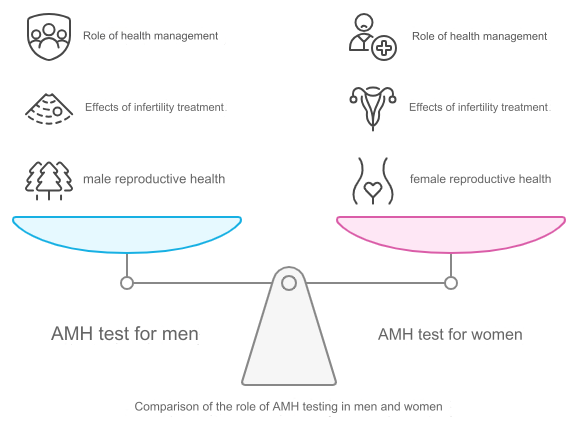
Myoglobin, an oxygen-transporting protein in muscle, serves as an indicator of myocardial infarction or muscle injury. Elevated blood levels suggest myocardial injury and aid in early diagnosis.
Male standard: Less than 154.9ng/mL
Female standard: Less than 106.0ng/mL
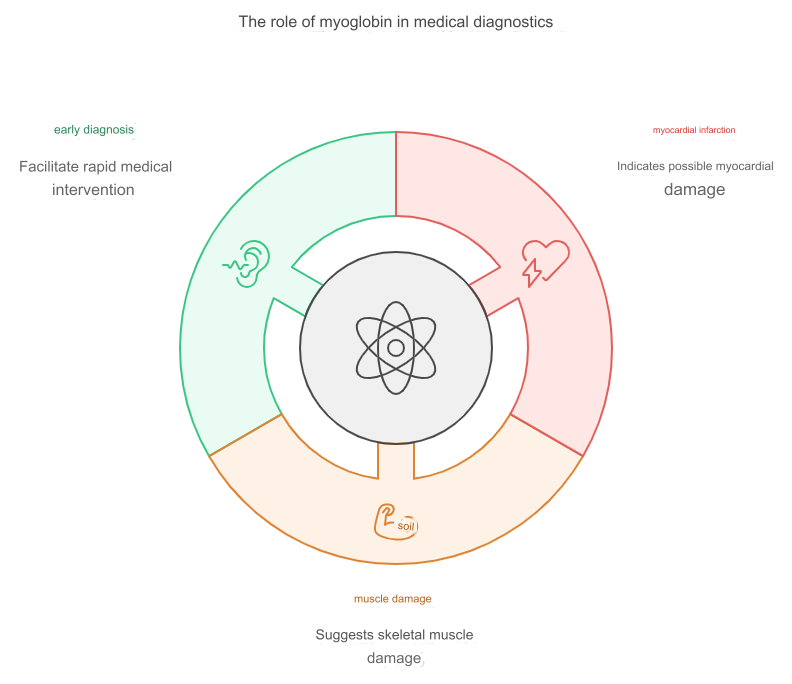
Procalcitonin is a hormone used as an indicator of bacterial infections and sepsis. High PCT levels increase the likelihood of serious infections, aiding in treatment decisions.
Japanese standard: 0.05ng/mL or less
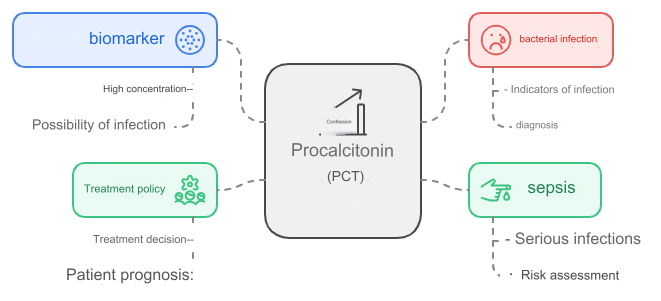
Pepsinogen II (PG II)
Pepsinogen is an endogenous enzyme of the stomach, with PG I produced in the gastric corpus and PG II in the gastric antrum. These biomarkers are used to assess stomach health and diagnose gastric ulcers and atrophic gastritis.
Japanese Reference Value: 70.1 ng/mL or higher, or I/II ratio of 3.1 or higher
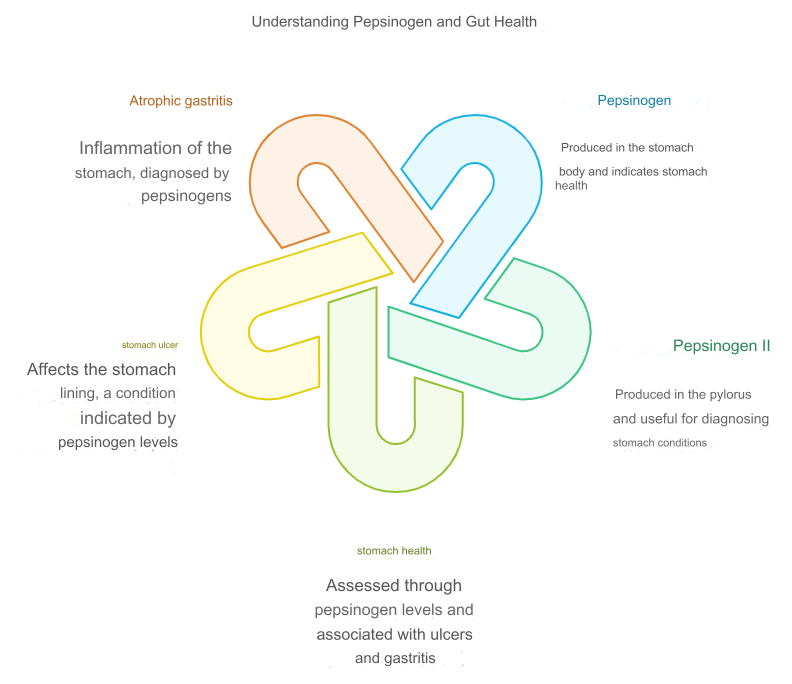
(H-FABP)
H-FABP is a protein released from cardiac muscle cells and is an early marker for myocardial damage. It is useful in the diagnosis of myocardial infarction and heart failure.
Japanese Reference Value: 5.0 ng/mL or lower
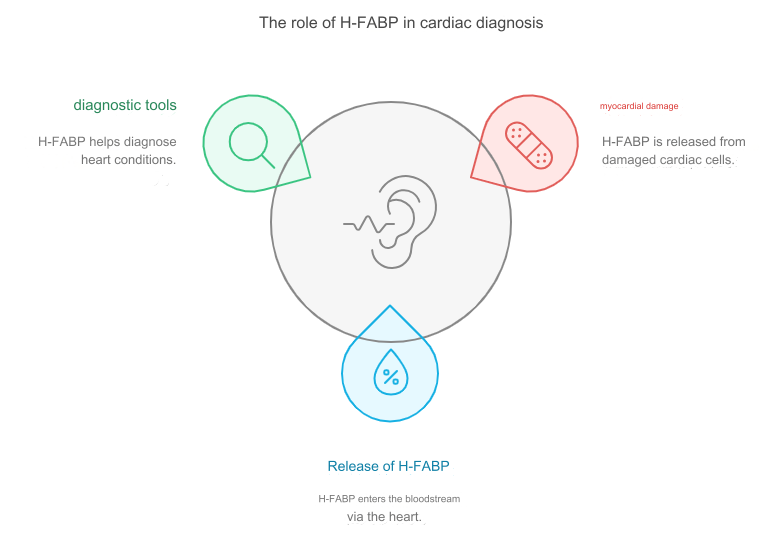
(RBP)
RBP is a protein involved in the transport of vitamin A and is used as an indicator of nutritional status and liver function. Measurement of RBP is especially important for evaluating liver disease and malnutrition.
Japanese Reference Value: 2.7–7.6 mg/dL

MPO is an enzyme found in white blood cells and is used as an indicator of inflammation and atherosclerosis. Elevated MPO levels have been shown to increase the risk of cardiovascular disease.
Japanese Reference Value: Less than 3.5 IU/mL
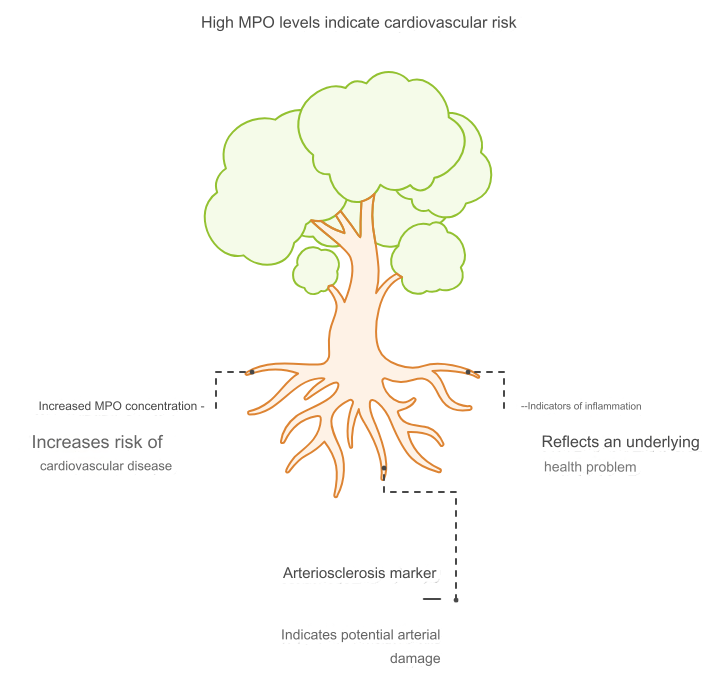
G-17 is a hormone that stimulates gastric acid secretion and is used to assess stomach function and evaluate gastric tumors. It particularly suggests excessive acid secretion or the presence of tumors in the stomach.
Japanese Reference Value: 11.9–46.9 pmol/L
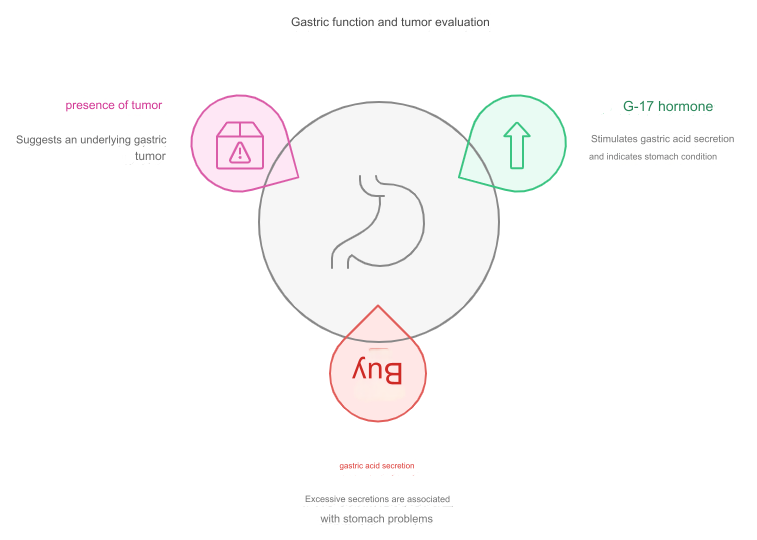
Interleukin-6 is an inflammatory cytokine used as an indicator for chronic inflammation and autoimmune diseases. High IL-6 levels may indicate the progression of various diseases.
Japanese Reference Value: 7.0 pg/mL or lower
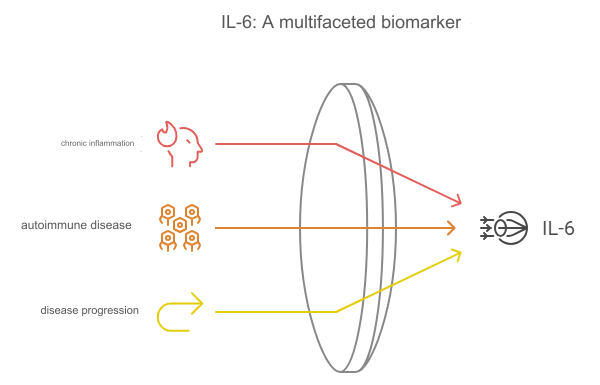
(CHI3L1)
This protein is used as an indicator for allergies and asthma. Measuring chitinase 3-like protein 1 is useful for assessing the severity of these conditions.
Japanese Reference Value: 40 ng/mL or lower
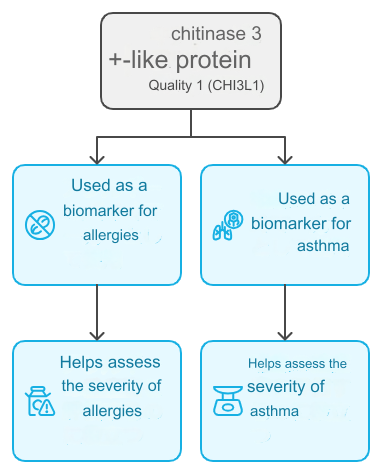
(P1NP)
This marker is used to evaluate bone formation and remodeling, reflecting bone formation status.
Furthermore, combining it with other tests can also aid in the evaluation of liver and lung diseases.
Male Reference Value: 20–76 µg/L
Female Reference Value: 16–96 µg/L

To determine liver disease, tests for Ferritin (Fer), CRP, and Microalbumin in urine (MAU) are effective.
- Ferritin (Fer): Ferritin is a protein involved in iron metabolism and is used to evaluate inflammation or iron overload associated with liver disease.
- Global C-reactive protein (CRP): CRP is widely used as an indicator of inflammatory response and may reflect inflammation in liver disease.
- Microalbumin in urine (MAU): In liver disease, albumin production decreases, making albumin evaluation useful.
For the evaluation of lung disease, it is recommended to use a combination of NT-proBNP, D-Dimer, and Serum Amyloid A (SAA).
- N-terminal pro-brain natriuretic peptide (NT-proBNP): Useful for assessing cardiopulmonary function, especially for detecting pulmonary hypertension and heart failure. NT-proBNP may increase if lung disease impacts the heart.
- D-Dimer: Used to assess thrombus formation and is associated with lung diseases such as pulmonary thromboembolism.
- Serum Amyloid A (SAA): An acute-phase protein, helpful in evaluating lung diseases like infections and pneumonia.
(Lp-PLA2)
This enzyme is used to evaluate the risk of atherosclerosis and cardiovascular disease. Elevated levels suggest an increased risk of cardiovascular disease, making it an important biomarker.
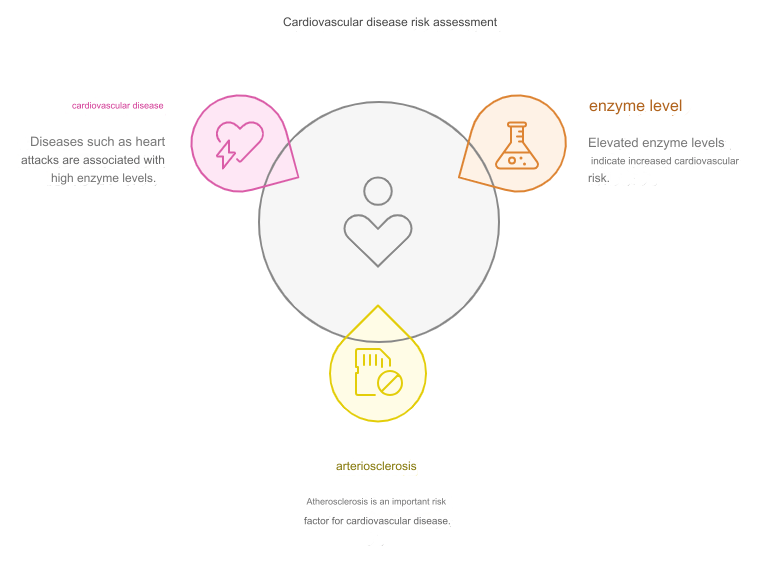
β-CTX (β-CrossLaps) is an important biomarker of bone metabolism and is used to assess the degree of bone resorption. This document provides detailed information on what quantitative testing of β-CTX can reveal and its clinical significance.
β-CTX is a peptide generated during the breakdown of bone collagen and is particularly important as an indicator of bone resorption. Bone metabolism is a continuous process, and maintaining the balance between bone formation and resorption is essential for healthy bones. Measuring β-CTX is a useful method for determining whether bone resorption is increased.
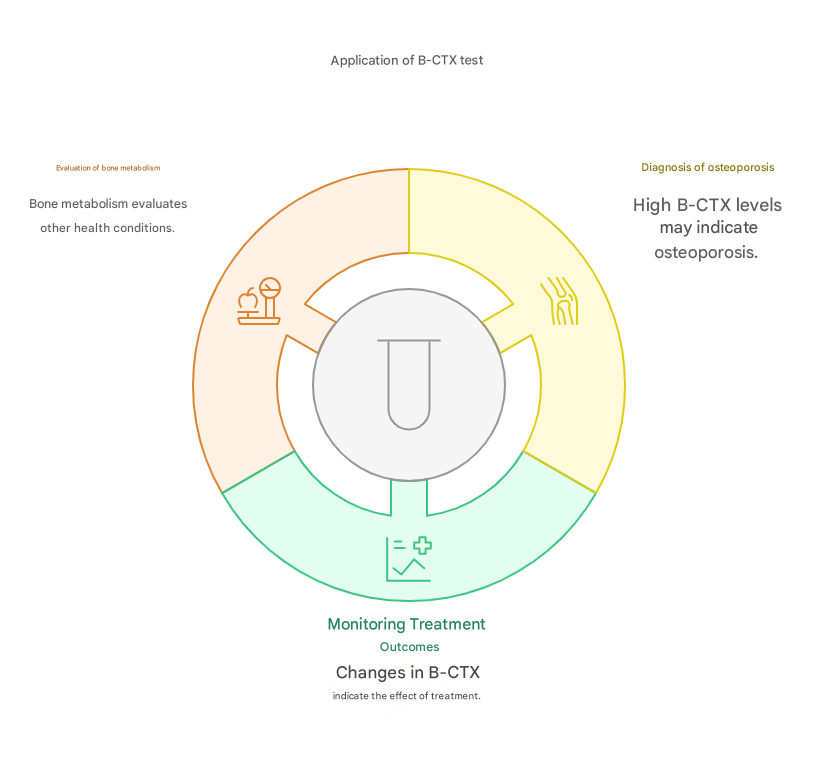
Combination of β-CTX with Other Testing Kits
-
Balance Between Bone Formation and Resorption: P1NP + β-CTX
P1NP (Procollagen Type I N-Terminal Propeptide) and β-CTX (C-Terminal Telopeptide) are important biomarkers for assessing the balance between bone formation and resorption. P1NP is an indicator of bone formation, while β-CTX indicates bone resorption. By combining these two biomarkers, the risk of osteoporosis can be assessed more accurately.
-
Bone Resorption Due to Vitamin D Deficiency: 25-OH-D + β-CTX
The combination of 25-OH-D (25-Hydroxyvitamin D) and β-CTX is useful for evaluating the impact of vitamin D deficiency on bone resorption. Vitamin D helps with calcium absorption and is essential for maintaining bone health. A deficiency in vitamin D increases bone resorption, raising the risk of osteoporosis.
-
Association with Inflammatory Diseases: IL-6 + β-CTX
The combination of IL-6 (Interleukin-6) and β-CTX is important for assessing the impact of inflammation on rheumatoid arthritis and other bone-related diseases. IL-6 is an inflammatory cytokine that promotes bone resorption. Measuring IL-6 and β-CTX together allows for a better understanding of disease progression and bone health status.
-
Impact of Nutritional Status and Oxidative Stress: Ferritin + β-CTX
The combination of ferritin and β-CTX helps evaluate how nutritional status and oxidative stress affect bone health. Ferritin is an indicator of iron storage, and both iron deficiency and excess can impact bone health. By measuring β-CTX along with ferritin, a more comprehensive assessment of bone health can be made.
-
Association with Metabolic Disorders and Obesity: Adiponectin + β-CTX
The combination of adiponectin and β-CTX is important for evaluating the effects of metabolic disorders and obesity on bone health. Adiponectin is a hormone secreted by fat cells and is involved in bone metabolism. Obesity and metabolic disorders are known to promote bone resorption, so combining these biomarkers provides a more precise assessment of bone health.
